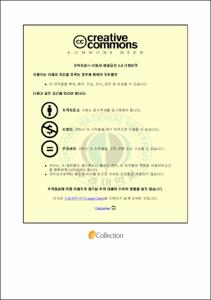부산물 아연분말을 재활용한 FLAKE 아연분말 제조에 관한 연구
- Abstract
- Zinc powder which is content 99% of metal pigment with average particle size 1~20㎛ is used in the method of coating ships and marine structures (zinc dust). Three manufacturers in Japan have been produced more than 20,000 tons annually. Among these products, about 5-10% will remain as a by-product and can’t be used because these particle size considered as the large pigment. These zinc powder byproducts can be recycled into zinc ingot with zinc content 95% or less by re-dissolution process using melting furnace. However, the zinc powder byproducts in such a re-dissolution process can be oxidized easily which caused the actual recycling yield has remained below 40%.
In this study, the recycling process of zinc powder by-product was attempted by using the attrition mill and chemical grinding process which is widely used in grinding process. High ductility and low melting point of Zinc is difficult to ground in a typical high density metal dry grinding method. The aggregation between particles may occur easily because of the frictional heat generated during milling. Therefore, research about the wet milling process using zinc powder slurry and lubricant additives has been done to solve the problems of existing process. Preventing heat generation of the milling process using chemical milling method was attempted to increase the grinding efficiency.
The attrition mill and 50L volume of tank are recovered from TNC Slurry was made with mixing zinc powder byproducts in anhydrous ethyl alcohol in order to prevent oxidation during milling. The lubricant additives is stearic acid (palm oil base) bought from SYNTHRON Inc.. The experiments were performed by adjusting the rotation and milling time as operating variables.
The optimum operating conditions are 200 rpm and 60 minutes of milling that gave more than 50% of grinding efficiency. It was confirmed by SUS ball media 3.0 mm (jar internal volume 30% V). The optimum slurry composition after 30 minutes of wet milling is 30% wt of zinc powder byproducts, 70% wt of anhydrous ethyl alcohol, and 0,5% wt of lubricant additives that gave more than 50% of efficiency.
By-products of Zinc dust recycling process (ZDRP) was used as zinc powder raw material. Composite ball milling (CBM) were applied to add more value of ZDRP byproducts by producing a Zinc flake that potential for commercialization.
The optimum operating conditions for CBM are 600 rpm and 60 minutes of milling that gave more than 30% of Zinc flake product with average particle size 10~20㎛. It was confirmed by SUS ball media 1.5 mm (jar inner volume 25% V). The optimum slurry composition after 60 minutes of milling is 30% wt of zinc powder byproducts, 70% wt of anhydrous ethyl alcohol, and 0,5% wt of lubricant additives that reached Zinc flake production yield maximum at 40%.
Analyze the product using SEM, it can be seen that ZDRP byproducts are expected to grind and braid together in wet attrition milling process. Thus, comparing with conventional Zinc powder, raw Zinc from ZDRP byproducts is easier to produce Zinc flake (higher yield).
Throughout the study, it is determined that ZDRP by products can increase 10% efficiency compared to existing recycling process that took more than 1,000 tons annually in the chemical milling process using the attrition mill. Also, producing the Zinc flake can increase the value of the product economically.
- Issued Date
- 2015
- Awarded Date
- 2015. 2
- Type
- Dissertation
- Publisher
- 부경대학교 산업대학원
- Affiliation
- 부경대학교 산업대학원
- Department
- 산업대학원 화학공학과
- Advisor
- 임준혁
- Table Of Contents
- 제 1장 서 론 1
제 2 장 이론 및 문헌조사 7
2.1 아연자원 재생공정 7
2.1.1 아연부산물 재활용 공정 7
2.1.2 연구의 필요성 8
2.2 이론적 배경 10
2.2.1 선행기술조사 10
2.2.2 금속분말 제조 기술 14
2.3 기계적 milling 공정에 의한 아연분말 제조 18
2.3.1 Attrition milling에 의한 아연분쇄 18
2.3.2 Attrition milling의 수학적 모델링 19
2.3.3 Complex bead milling(CBM) 공정에 의한
zinc flake 제조 21
2.3.4 아연의 분쇄 특성 25
2.4 아연분말 안료 특성 28
제 3 장 실험 방법 33
3.1 Attrition mill을 이용한 화학적 milling기술 연구 33
3.1.1 부산물 아연분말 재 분쇄 공정 기술 연구 33
3.1.2 Attrition milling 최적화 공정 34
3.2 재활용 아연분말의 Flake화 공정기술 연구 37
3.2.1 CBM 공정 방법에 따른 영향 평가 37
3.2.2 CBM 공정에 따른 생산 수율 40
3.2.3 Zinc Flake 제조 실험 조건 41
제 4 장 결과 및 고찰 42
4.1 부산물 아연분말 분쇄 실험 결과 42
4.1.1 운전조건에 따른 유효 입도 변화 42
4.1.2 조성설계에 따른 유효 입도 변화 42
4.1.3 부산물 아연분말 평균입도에 따른 유효 입도 변화 47
4.1.4 Ball media 입경에 따른 유효 입도 변화 47
4.2 CBM 공정을 통한 flake화 연구 결과 53
4.2.1 재생 아연분말 조성변화에 따른 flake 수율 결과 53
4.2.2 CBM 공정 속도 변화에 따른 flake 수율 변화 53
4.2.3 윤활첨가제 농도 변화에 따른 flake 수율 변화 56
4.3 부산물 아연분말 재생공정 특성 연구 58
4.3.1 Zinc dust 제조공정에 따른 특성 분석 58
4.3.2 부산물 Zinc dust 제조 공정에 따른 SEM 분석 결과 61
4.3.3 Attrition milling mechanism 연구 결과 63
4.3.4 공정 흐름도 연구 64
제 5장. 결 론 65
참고문헌 67
- Degree
- Master
- Files in This Item:
-
-
Download
 부산물 아연분말을 재활용한 FLAKE 아연분말 제조에 관한 연구.pdf
기타 데이터 / 5.02 MB / Adobe PDF
부산물 아연분말을 재활용한 FLAKE 아연분말 제조에 관한 연구.pdf
기타 데이터 / 5.02 MB / Adobe PDF
-
Items in Repository are protected by copyright, with all rights reserved, unless otherwise indicated.